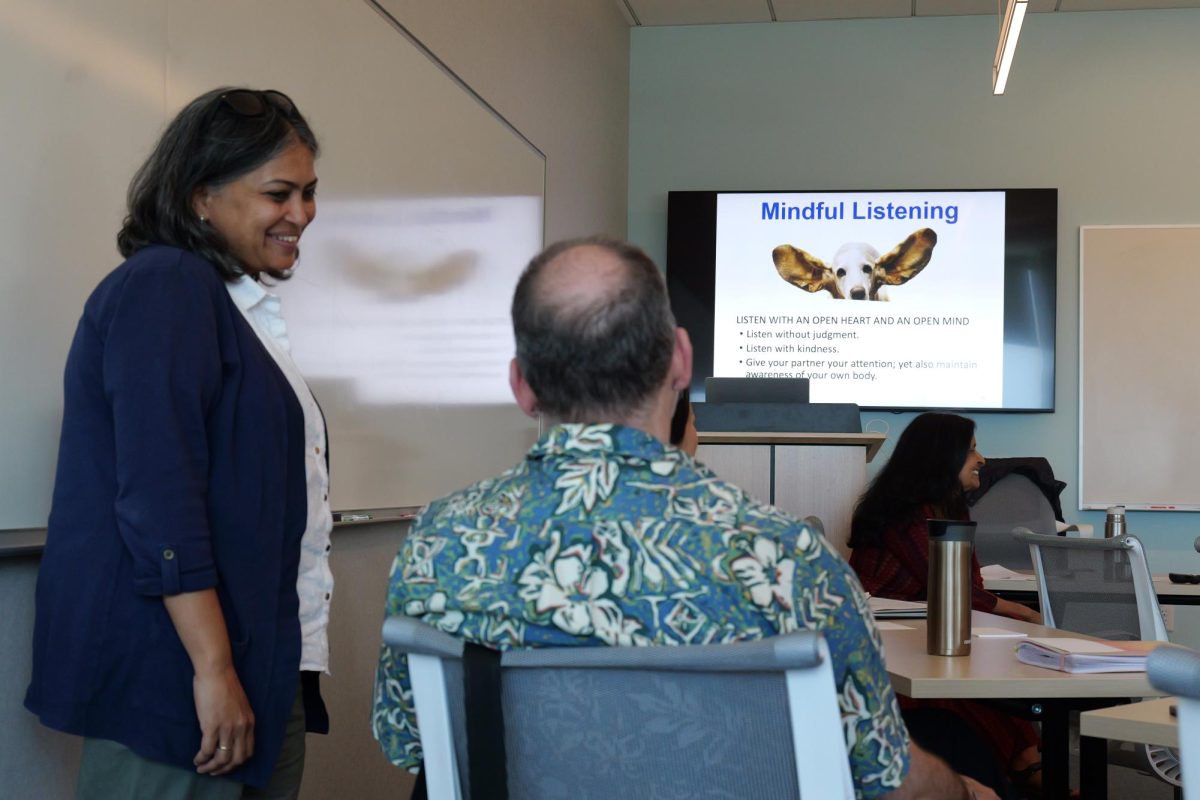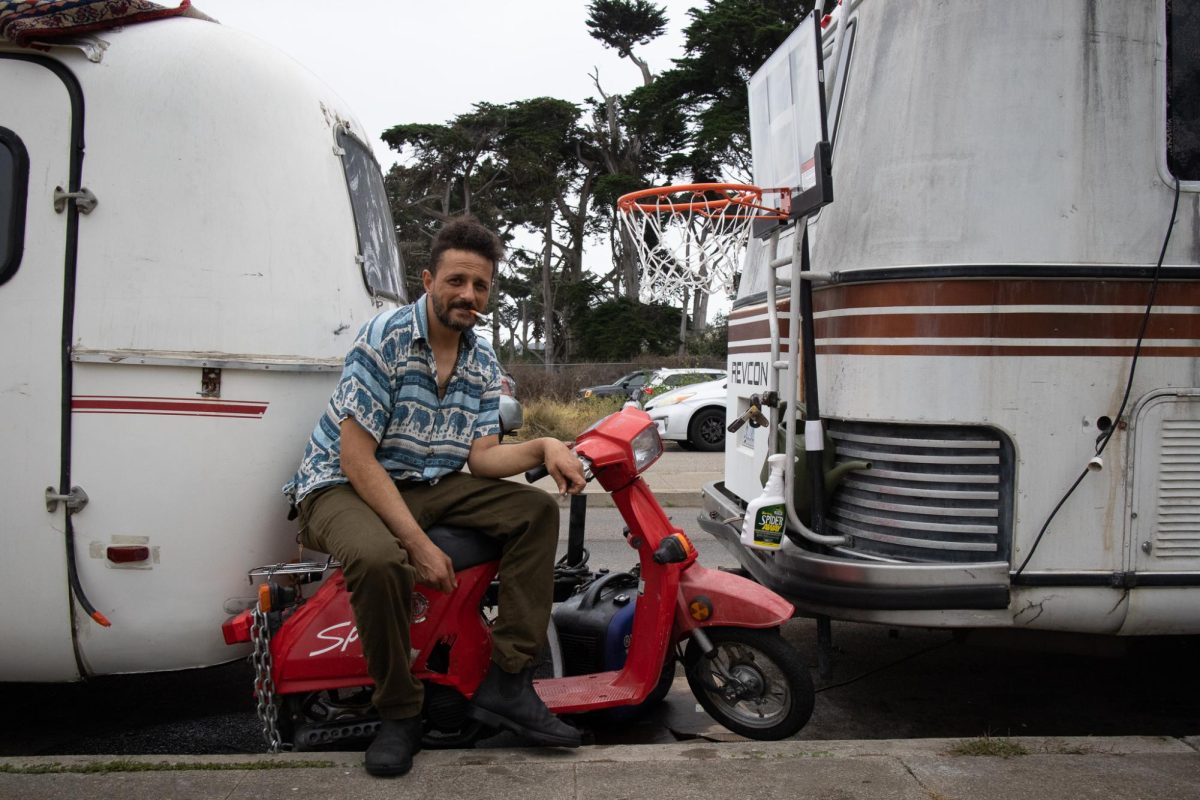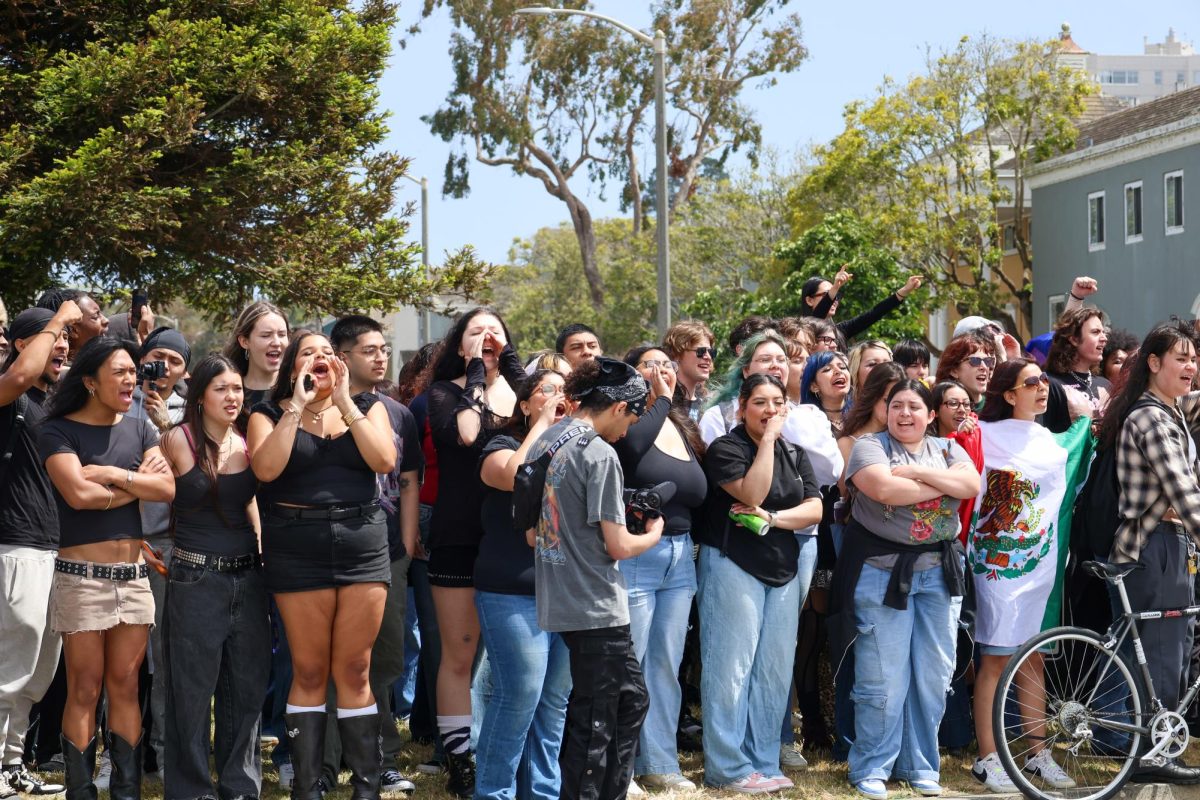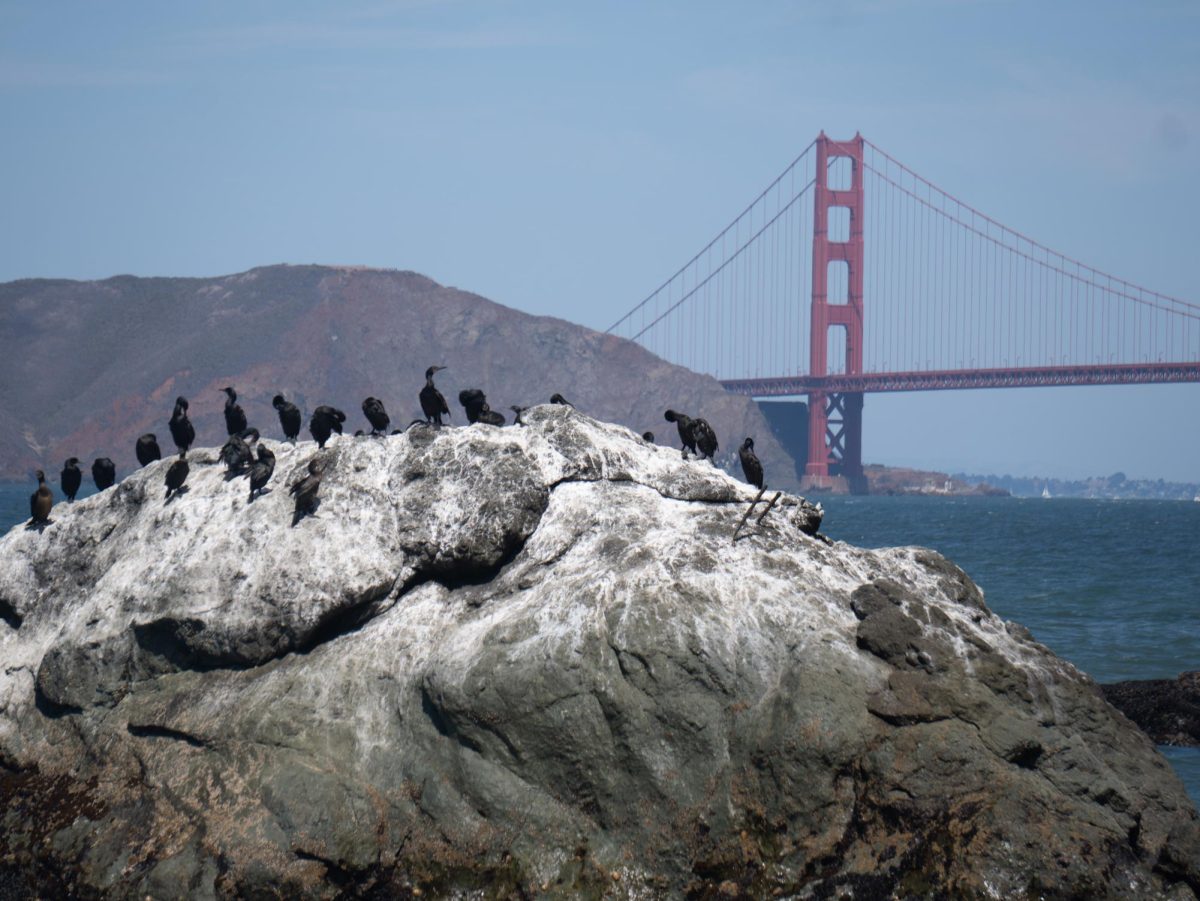A year and a half before the fire incinerated their community, before they fled a whirlwind of flames, before they lived in a makeshift tent on the charred remains of their property, Jeanette Hernandez and Doug Major watched as their home burned for the first time.
It was an isolated event. An old wood stove overheated and took the rest of the house with it. In the dead of night, they roused Doug’s eighty-eight-year-old mother who they lived with and escaped the building as it filled with smoke. All they got out were a few blankets and each other. It was a single-structure fire, and they were all on their own.
“You can’t stop a fire,” Doug says. “I thought I always could. All my life I’ve put out fires. Not this one.”
After nearly a year, Doug and Jeanette bought a piece of land. They moved from Redding, California to a tiny community in the woods called Keswick, five miles away. They renovated their newly acquired building—a shack originally built in 1927. Steadily, they made improvements to the house and the yard, living out of an RV while they worked. Life almost began to feel normal.
Then everything burned again. This time, Doug and Jeanette were hardly alone.
The Carr Fire erupted at the end of July. It swept through two counties in Northern California before it was finally contained over a month later. It took out more than two hundred thousand acres, much of that in the pristine wilderness of Whiskeytown National Recreation Area. It also leveled more than a thousand homes and lead to the deaths of eight people. It was California’s deadliest, most destructive fire of 2018.
For about three months, anyway.
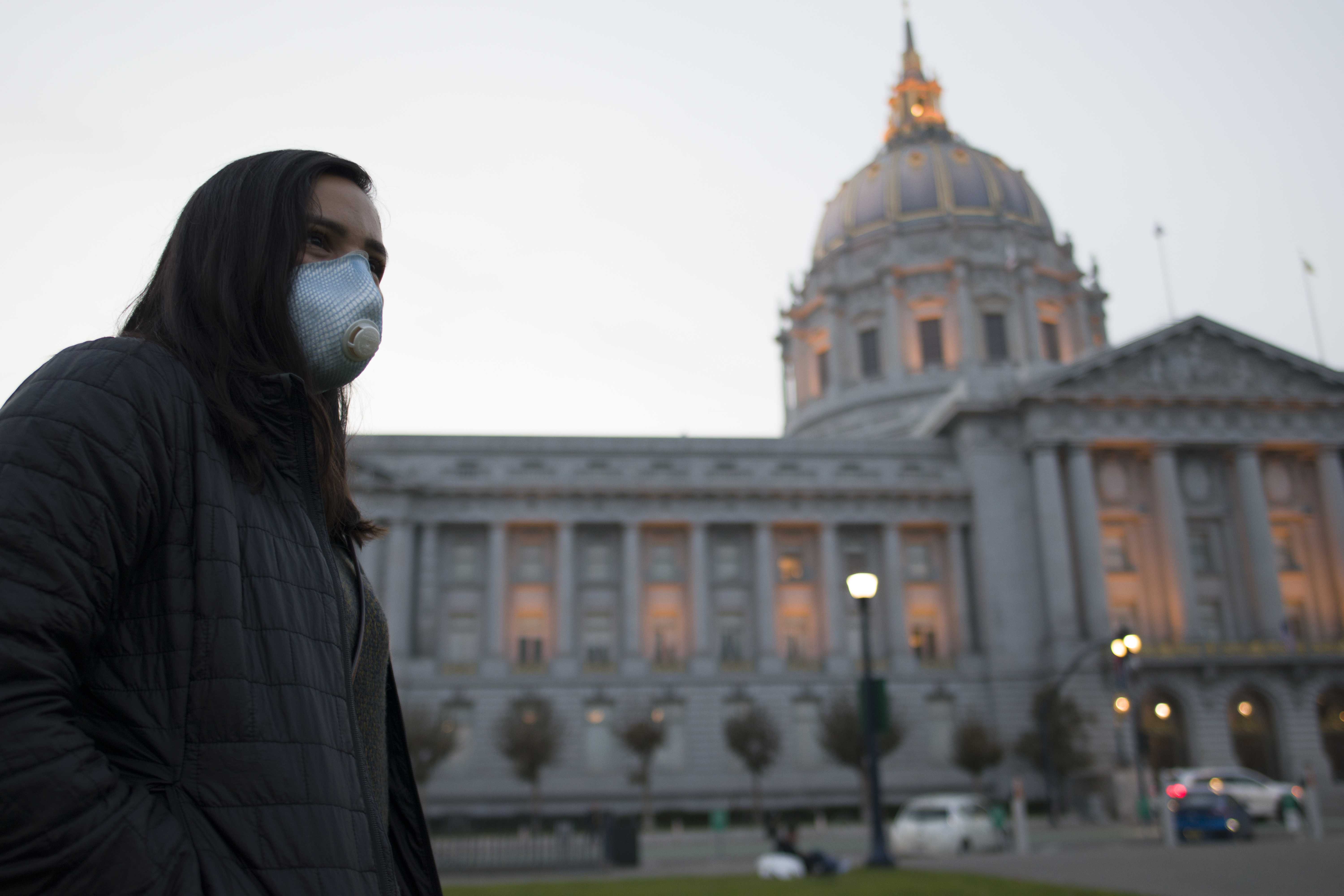
You can’t breathe in San Francisco. Not without a hazard mask. A thick cloud of smoke has hung over the city for a week and a half, prompting a red “Unhealthy” rating on the government Air Quality Index. Excitable media outlets scramble to make a slew of dramatic comparisons—from breathing the air in Delhi, India to sucking down a whole pack of cigarettes.
It’s not like San Franciscans are unfamiliar with a little atmospheric obfuscation. After all, this is a city that has affectionately personified its most famous weather pattern. But if the fog is Karl then this smoke is Lucifer, a suffocating, gray-orange haze that has pinned the city beneath its malevolent presence.
While city goers wear masks and grumble about the air quality, a three-hour drive north, the sky looks very different.
In Paradise, it’s pitch black at 9:30 in the morning. The smothering darkness is broken only by the light of the advancing flames. Terrified evacuees flee in their vehicles, mere minutes after learning there was a threat. Some of them will die where they are, trapped in gridlock traffic. Others haven’t even made it that far. The fire hit so fast that many people, some elderly or disabled, are trapped inside their own homes as the buildings burn down. An entire town laid to waste by the Camp Fire.
Camp Fire. That unfortunately innocuous moniker belies the utter devastation the fire has wrought in its 240-mile invasion. At the time this magazine is going to print, the numbers are unfathomable: Eighty-five people dead. Fourteen thousand homes obliterated. That’s what denizens of the Bay Area are sucking into their lungs. The microscopic floating particulates of an apocalypse, diffused across hundreds of miles. The cars. The furniture. The bodies.
It’s a horrible thing to have interrupting your daily life. But it could be worse. There could be nothing left to interrupt.
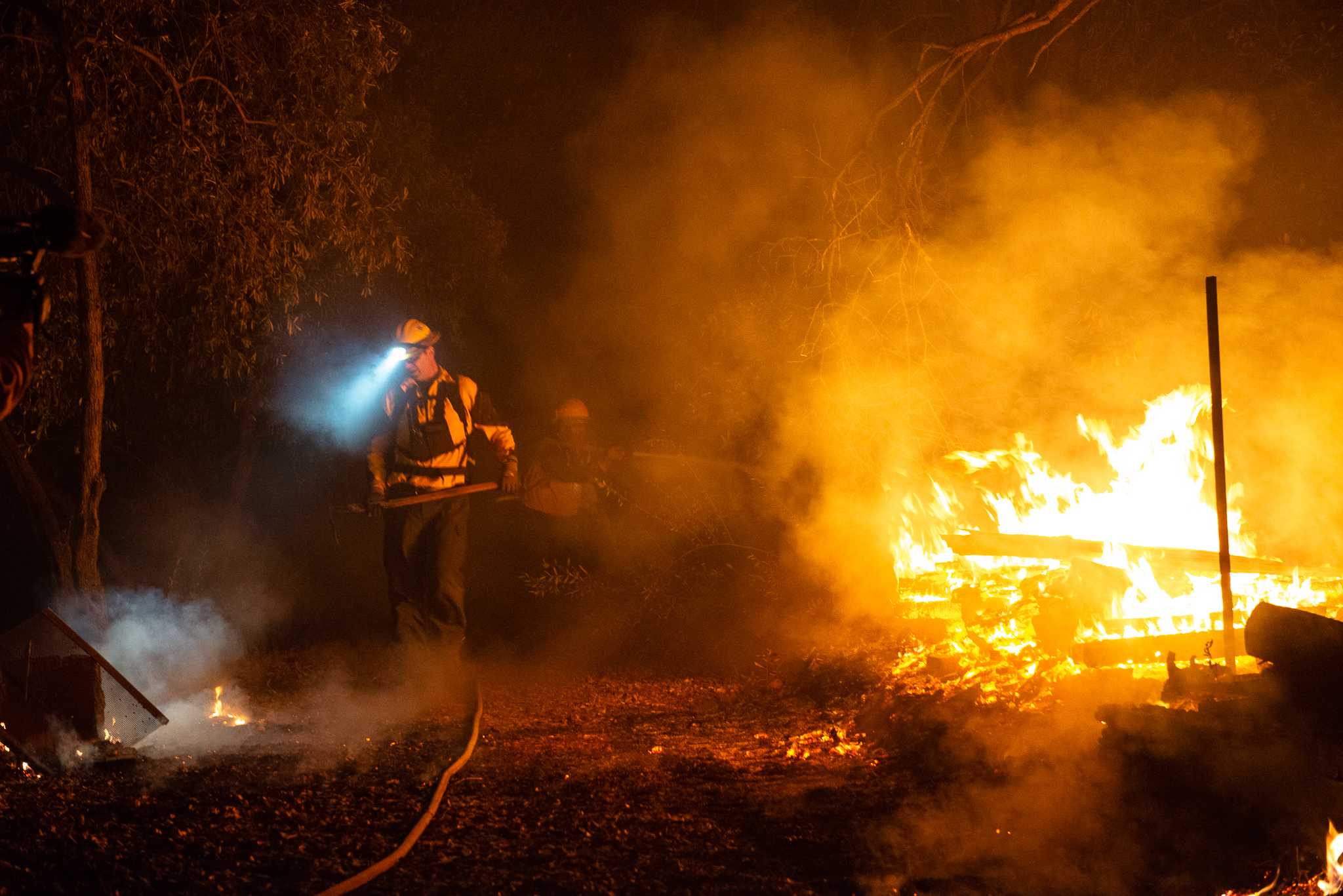
People who have never been to far Northern California tend to think the state is capped off by San Francisco or Sacramento. Anything farther north might as well be Oregon. California’s upper quarter is a loose federation of small towns, sprawling farmland, mountains, lakes, and forests. Lots and lots of forests.
Paradise was a small town nobody had ever heard of until it stopped existing. It won’t be the last, and it certainly isn’t the first.
Eighty miles north of Paradise (a four hour drive from San Francisco) is Redding. A wide, rural-esque municipality, Redding is home to a hundred thousand people—a collection of families, outdoorsy types, retirees, and the increasingly enthusiastic acolytes of the local evangelical megachurch. It is a town that is either frustratingly stagnant or changing way too fast, depending on who you ask.
The Camp Fire swept through Butte County like a wave of dragon fire—a directed, furious blast designed to inflict as much carnage as possible. Alternatively, the Carr Fire moved like it was alive. Three days after it started, it exploded in every direction at once, tripling in size overnight. Normal wind patterns didn’t matter; the blaze created its own weather. It spread from the wilderness twenty miles outside of Redding into its city limits, laying to waste the small communities in between. As night fell, one area of conflagration whipped itself into a swirling vortex of flames and smoke. The firenado, as it came to be called, was strong enough to uproot trees and topple a steel electrical tower. The fire danced through rural cabins and dense subdivisions alike. It turned people’s homes to ash and flung their entire lives into the air.
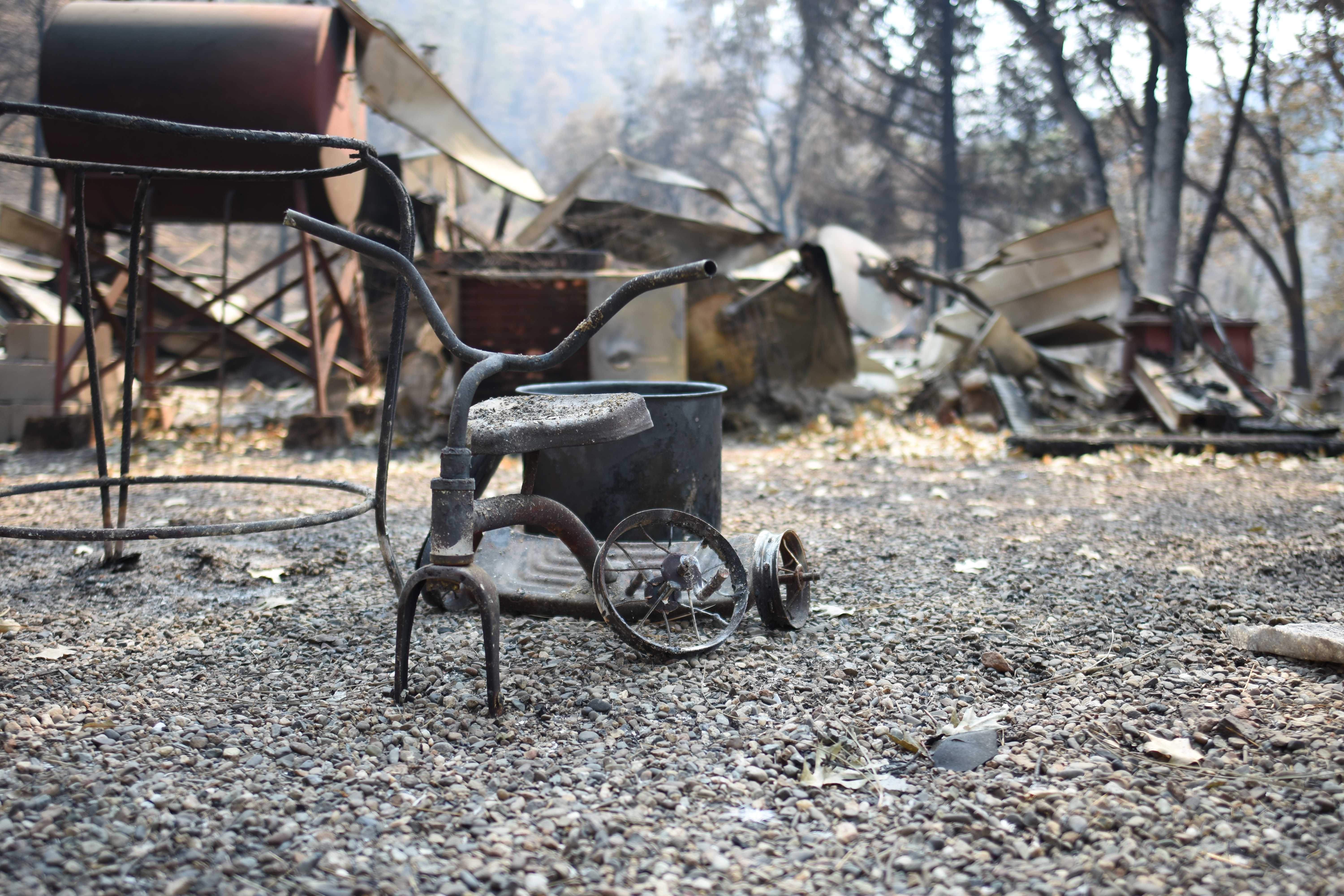
For the past twenty years, Eric Cook has lived in Keswick, a tiny community of several dozen houses just a few miles outside of Redding proper. He spent much of his childhood there as well, back when his house belonged to his grandfather. Today, he’s a tall, lanky man with sunken cheeks and a drawl that wouldn’t sound out of place in the Deep South. When the Carr Fire devoured Keswick, only two homes survived the blaze. Cook’s was not one of them.
“When somebody asks me what I need, I go, ‘I need one of everything,’” Cook says. “Because I have nothing.”
Just up the street from Eric’s place live Doug and Jeanette. Their roomy, previously shaded plot of land is now a blackened skeleton of what it was. Since the fire, their lot has been cleared by a state hazardous waste removal team, any remains of a structure scraped down to the dirt. The first good storm of the season drops rain onto the uneven ground and turns it into thick, goopy mud. For two days, the water has been pooling up in the middle of their property, forming a great big puddle, maybe a dozen feet across.
“I gotta get some trout,” Doug says, eyeing his new pond. “Put ‘em out there and have a fishing hole.” He rubs his graying stubble and lets out a raspy laugh.
The rain is a more-than-welcome respite from the dry, windy heat of that terrible summer. After Doug and Jeanette evacuated, they stayed in an evacuation shelter at the local community college until they were able to get back to their property. There was nothing for them there when they returned. They improvised a shelter, wrapping tarps around a pop-up canopy, and lived out of that.
“Yeah, we were the tent people,” Doug says.
Jeanette cracks the lid of an expired bottle of Fanta—one of the few items in their small refrigerator.
“We’re not even supposed to be out here,” she says. She leans forward, her single braid of hair falling over her shoulder. “I don’t give a shit. It’s our property. Where are we gonna go?”
Without insurance, the couple has no clear path of how to approach their rebuilding efforts. For now, they plan to stay put, hopeful that state or federal relief efforts will provide them a new home.
“They’re going to build one for us,” Jeanette says, tugging at her braid. “You gotta believe that. They are going to rebuild. We’re all going to get homes. I keep telling everybody, we’re going to get homes.”
“Maybe,” Doug says. “I never count on it ‘til it happens.”
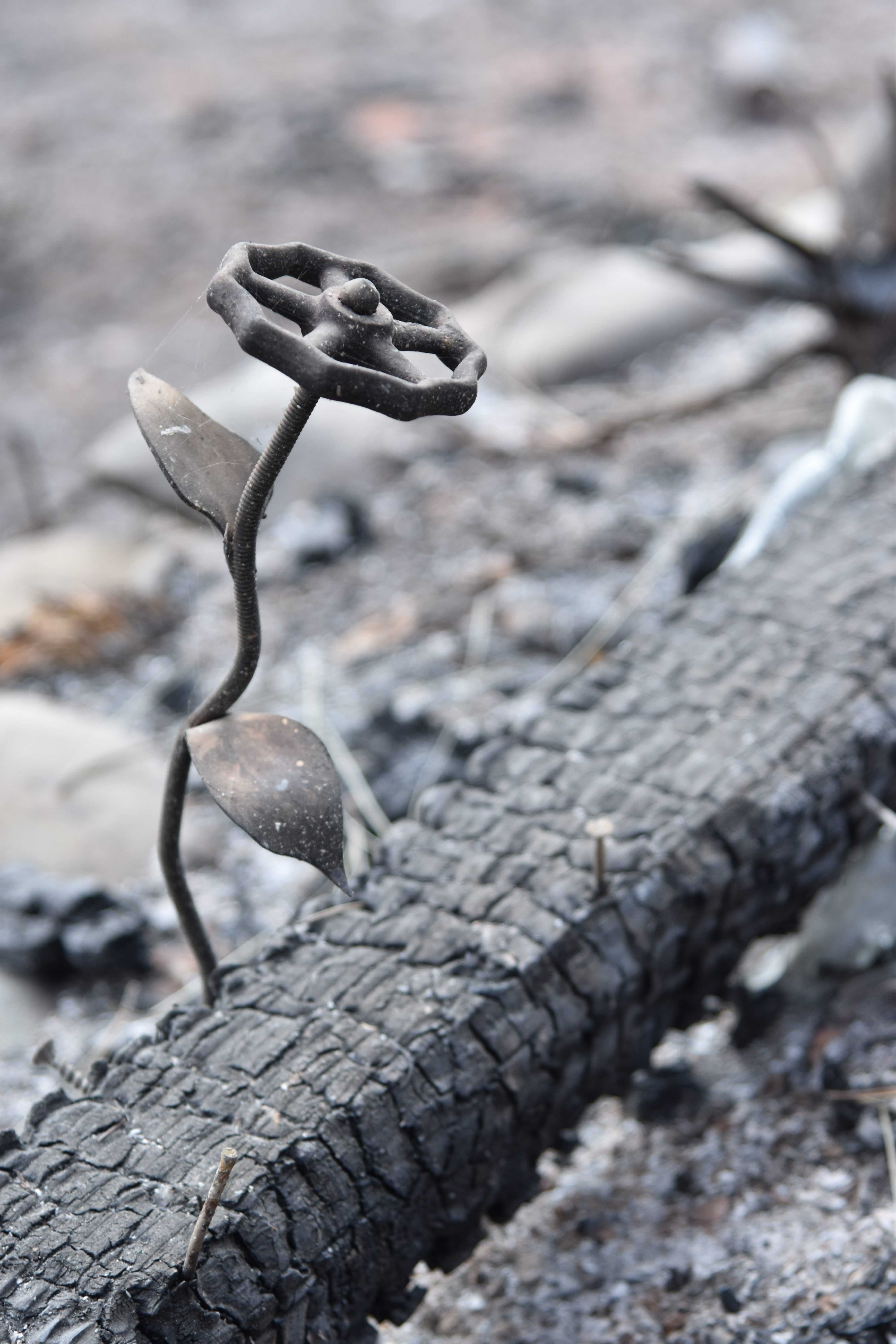
About twenty miles outside of Redding is the small canyon town of French Gulch. Originally established as a mining community during the California Gold Rush, the town feels like a mashup of Old West tropes. There’s a post office, a schoolhouse, and two bars, directly across the street from each other. A sign on the long-shuttered general store reads “Population: 325 (give or take a few).”
Today, the forested hills of French Gulch look like they’ve been given a buzz cut—blackened, branchless husks of trees stick out from the ground in scattered clumps. The hillside, normally hidden by verdant foliage, is stained black, rivulets in the rock exposed like veins.
“It all seems much smaller,” resident Kim Jeffrey says. “Without the trees, everything seems really close.”
Kim had lived in the hills of French Gulch with her husband and their two daughters for sixteen years. They rented their house all that time. Though they tried several times throughout the years, they were never able to acquire renter’s insurance. Kim says they were turned down because of several risk factors, the big one being that there was only one way in and out: a wooden bridge that crossed over a creek.
Kim and her family evacuated shortly before that bridge, and their house, burned in the Carr Fire. They lost most of what they owned, though they knew enough about the risk of wildfires to bring with them important documents, expensive items they couldn’t afford to replace, and bills that needed paying.
“We think very practically,” Jeffrey says. “Life does crazy stuff sometimes. You gotta roll with it. If you have low expectations you’ll never be disappointed.”
A friend in Redding took them in initially, but then they all had to evacuate when the fire came to burn their house too. After moving between different places, Kim and her family have settled back in French Gulch, in a house right on Main Street.
The saving grace for them is that their landlords had homeowners insurance. They lost their own home as well, but they do plan to rebuild both structures. As for when exactly that will happen, nobody is quite sure.
“We plan to go back,” Kim says. “We don’t want to leave. We really don’t. But it’s pretty devastated. It looks like a bomb went off. I think on six acres, we’re going to end up with six trees.”
Insurance, though it can give hope to fire survivors, does not always guarantee them peace of mind.
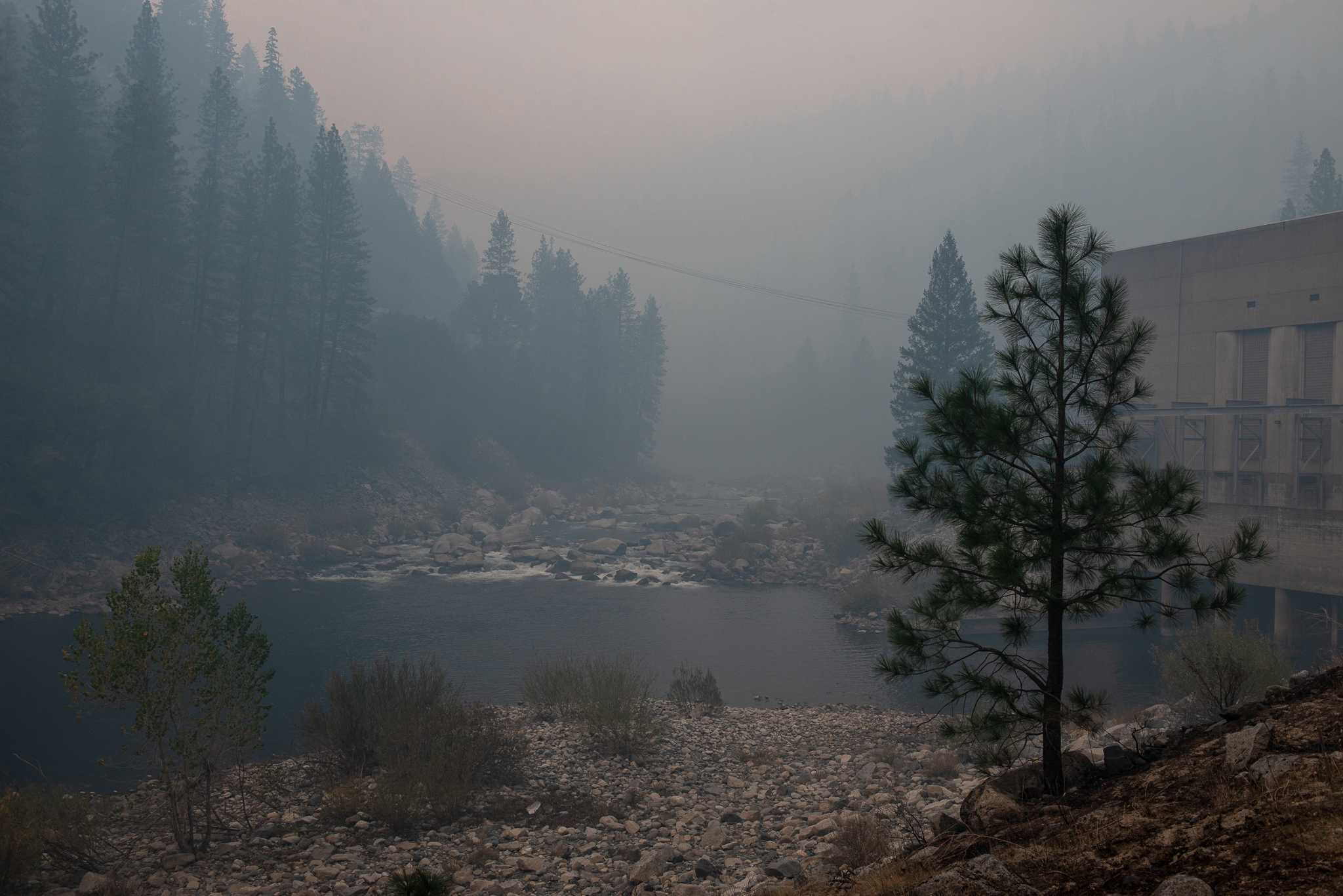
In October 2017, the city of Santa Rosa and surrounding wine country was devastated by the Tubbs Fire. Of the 2,800 homes lost in Santa Rosa, less than half are in the process of being rebuilt.
After her home burned, Vita Iskandar created Neighbors Together—Strong & Resilient, a website that offers support and pertinent information to fire survivors. She intended it to be a resource primarily for those who, like her, had lost homes in the Tubbs Fire. Then came Carr. Then Camp. Now, it seems her work is far from over.
“I was just starting to get to the point where I was finally able to have feelings about my personal situation,” Vita says.
Vita and her partner have spent the year since they lost their home battling with their insurance company. For many insured fire survivors, their story will be a familiar one. They’ve been asked to itemize each and every one of their household possessions, pay out of pocket for architectural surveys, and deal with multiple adjusters who provide conflicting policy information.
“Insurance companies spend a lot of money to not give you the money you’ve paid for,” Vita says.
Ultimately, they chose not to rebuild. After factoring in the time commitment, the cost to bring the building up to code, and the continued battle with their insurance company, they felt that rebuilding made less sense financially than buying a house elsewhere. Theirs may have been a practical choice, but that doesn’t mean it was easy.
One fire survivor compared the experience to making a major medical decision: “Let’s say you have cancer. Do you go with surgery or chemo? What if you’re wrong? You make a choice and there’s a possibility that you’ll look back and regret it.”
Mike and Teresa Powell lived on the western outskirts of Redding before the fire burned them out. They found a house to rent in town and stayed there for the three months it took to negotiate a payout from their insurance company. They never really entertained the idea of rebuilding.
“Redding, I’m done with,” Mike says. He’s got a laid-back, surfer/musician vibe, with long gray-and-black hair pulled back into a ponytail to match. “I just need to walk on the beach. That’s my goal in life.”
To that end, they recently bought a house in Brookings, Oregon. They moved at the end of November, packing up what remained of their belongings and leaving their old life behind. In a way, they are the lucky ones. After losing almost everything in a disaster, being able to move on with your life is a kind of luxury.
“It’s a blessing in disguise,” Mike says with a shrug. “It’s just a really big disguise.”
Again, their decision doesn’t come without consequences. Though they are moving away, their eighteen-year-old son Jered has stayed behind. He is living with family friends until he graduates from high school next year. After that, Jered says he plans to head to Brookings as well.
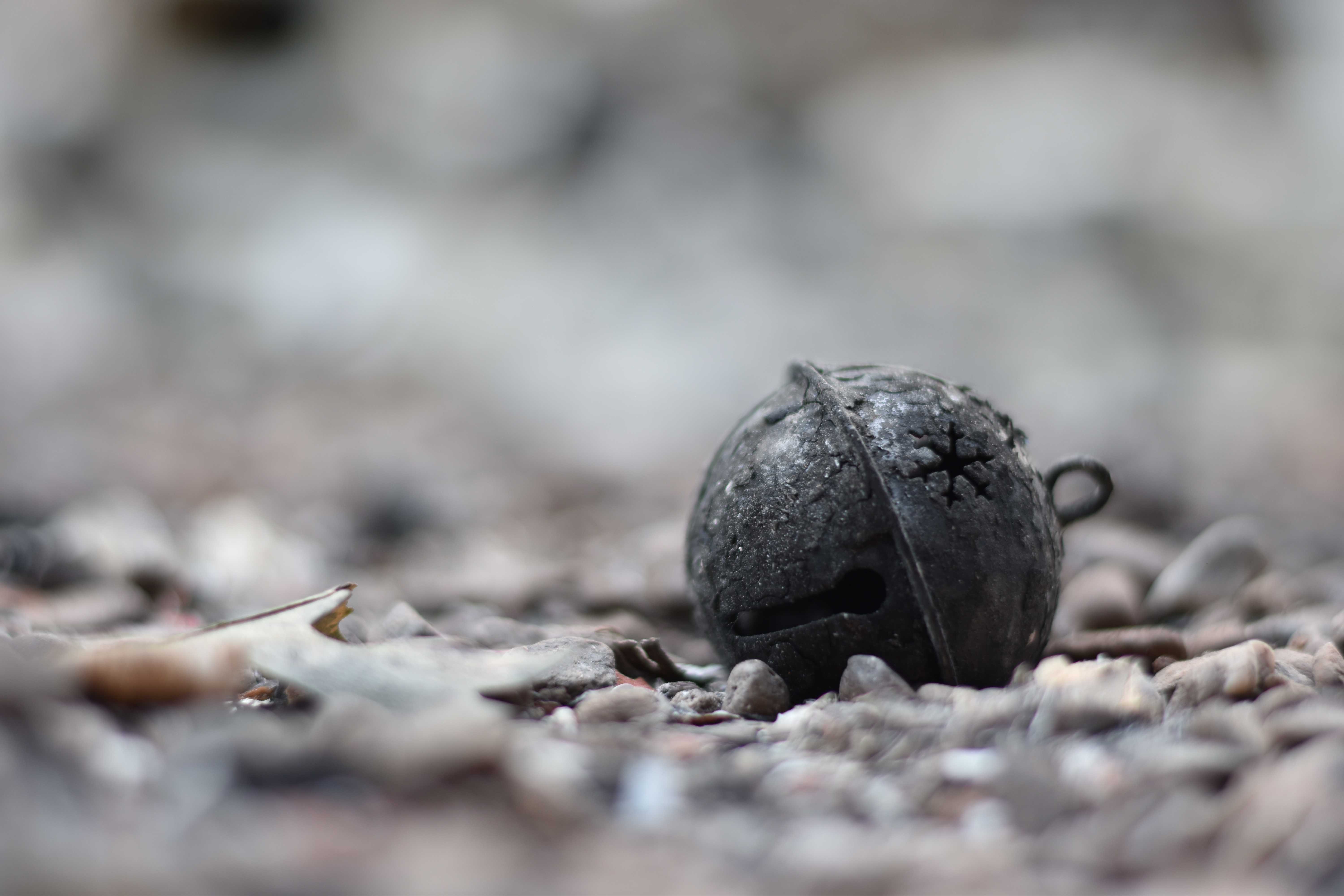
After two years of the most destructive, deadly fires in the state’s history, one big question has arisen for fire survivors: Why? If fire season keeps getting worse and worse, why do people continue to live in wooded areas that are at risk of burning?
“You hear that a lot: ‘Well that’s what they get for living in the forest,’” Mike says. “But Paradise was established in 1800s. It’s been there a long time. It’s not like people just decided ‘Oh, we’re gonna go move there.’ It’s been established.”
Even as long-standing communities such as Paradise and Keswick get wiped out, California has seen a rise in development in fire-prone areas. A study conducted by researchers at UC Berkeley, Boston University, and the California Nature Conservancy found that if current trends continue, “645 thousand houses will be built in areas currently designated as ‘very high’ wildfire severity zones” by 2050.
People who choose to live in wooded areas extol the sort of lifestyle benefits you might expect: the calmer pace of country living, the serenity of nature, the beauty of the forests when they aren’t engulfed in flames. But there are more practical reasons as well.
“We moved here because we could afford this piece of property,” Doug says. “We had enough money to buy it and not worry about it. That’s the only reason. If I coulda’ moved to Santa Barbara, I would have.”
Jeanette chimes in: “We wanted to own something. That’s the American dream. That’s freedom.”
To indict poor, rural fire victims for choosing to live in forested areas is to misunderstand the class dynamics laid bare by a disaster. According to a report by The World Bank, poor communities are disproportionately more likely to be affected by natural disasters than wealthier ones. In turn, they are also far less likely to have access to insurance, disaster preparedness resources, medical and mental health services.
Cities such as San Francisco are often the innovators of technological and societal trends that spread to other communities (after all, even uninsured fire refugees have iPhones). Now, as a changing climate leads to more extreme weather, poor, rural communities are finding themselves at the forefront of a new, rapidly spreading trend: burning up in a wildfire.
The toxic air that hangs over San Francisco is more than an inconvenience. It’s a harbinger of the statewide chaos and destruction to come.
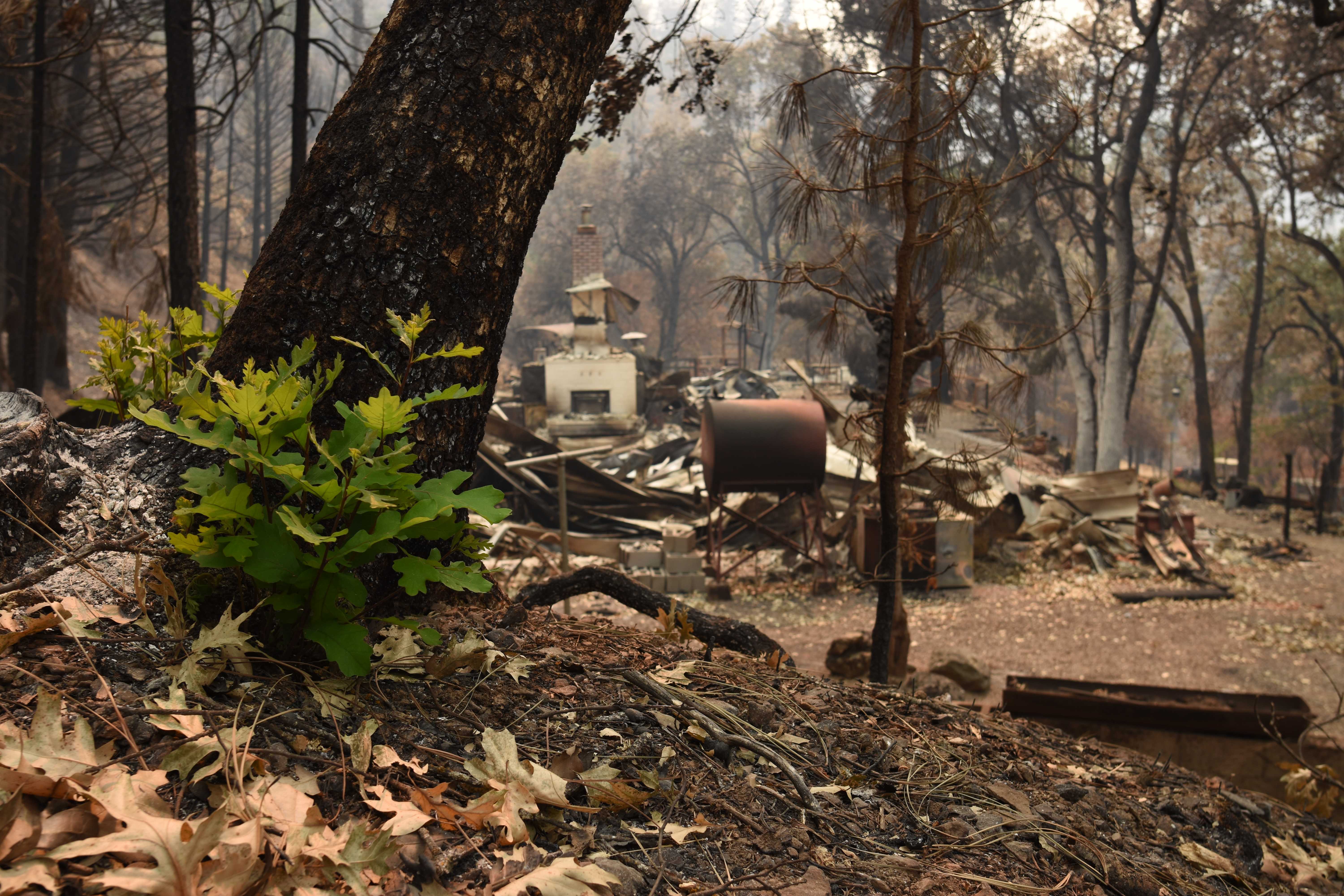
Though it is a dire situation to be sure, there is a bright spot. However corny it may sound, we still have each other.
“When this first happened, you know, I was down,” Eric Cook says. “I just figured well, all that work, all those years. I pretty much gave up in the beginning. I was despondent. And it was people’s generosity that brought me back up and gave me hope.”
After the Tubbs, Carr, and Camp fires, thousands of individuals and organizations have stepped up to provide donations and resources for fire survivors. In September, an anonymous survivor of the Tubbs Fire donated a fifth wheel to a charity helping with wildlife relief efforts. Doug and Jeanette now live in that camper.
“We experienced both ways,” Jeanette says. “We experienced being alone on a fire. It was horrible. Just horrible. Then with this fire, the community help was great.”
Though they’ve been in this particular neighborhood for less than a year, Jeanette has committed herself to acting as an advocate for her community.
“I don’t care how big or small the challenge is, you do it,” she says. “I need to get out there talking to people because we need to come together. A lot of people don’t have insurance. Those people are afraid of not being remembered or being lost in the shuffle.”
As worsening fires displace more and more of the state’s population, there is still hope that these disasters will continue to bring out the best in people.
“People keep saying this is Hell,” says Vita Iskandar. “I mean, you look around California and it looks like it’s literally Hell, I don’t know what else you call it. But Hell is not filled with this many generous, caring, compassionate people. This is not Hell.” She lets out a small laugh. “I don’t know what it is, but it’s not Hell.”



